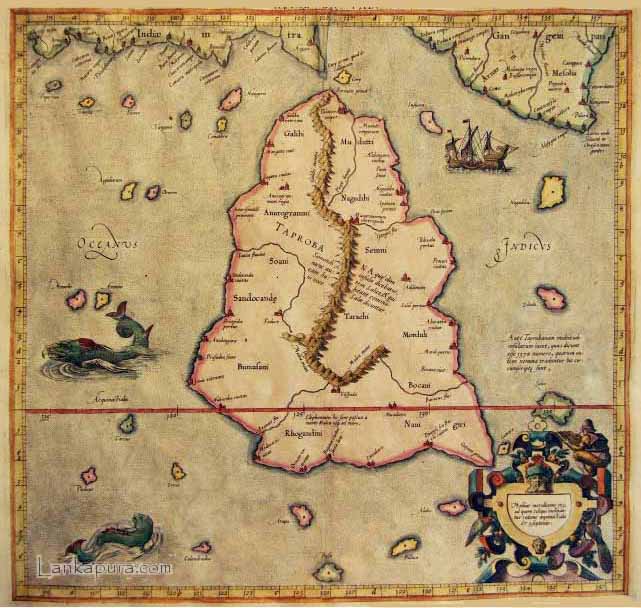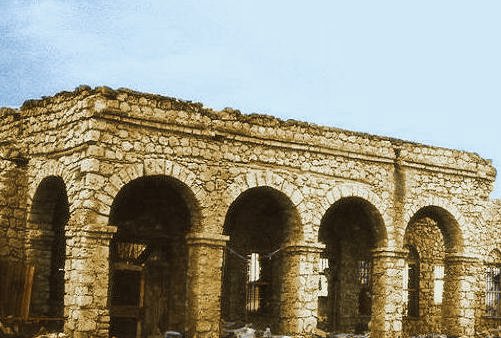|
Clime
The climes (singular ''clime''; also ''clima'', plural ''climata'', from Greek κλίμα ''klima'', plural κλίματα ''klimata'', meaning "inclination" or "slope") in classical Greco-Roman geography and astronomy were the divisions of the inhabited portion of the spherical Earth by geographic latitude. Starting with Aristotle (''Meteorology'' 2.5,362a32), the Earth was divided into five zones, assuming two ''frigid'' climes (the arctic and antarctic) around the poles, an uninhabitable ''torrid'' clime near the equator, and two ''temperate'' climes between the frigid and the torrid ones. Different lists of climata were in use in Hellenistic and Roman time. Claudius Ptolemy was the first ancient scientist known to have devised the so-called system of seven climes (Almagest 2.12) which, due to his authority, became one of the canonical elements of late antique, medieval European and Arab geography. In Medieval Europe, the climes for 15 and 18 hours of longest dayl ... [...More Info...] [...Related Items...] OR: [Wikipedia] [Google] [Baidu] |
Amīn Rāzī
Amin Razi also known as ''Omid'') was a Safavid dynasty, Safavid-era (16th to 17th century) Persian people, Persian geographer, author of a geographical and biographical encyclopedia (''tadhkirah (other), tadhkirah'') called ''Haft iqlīm'' ( "seven climes") based on the system of seven climes of Ptolemy's ''Almagest''. Al-Razi was born in Ray, Persia into a prestigious family; his father was Kvajeh Mirza Ahmad, the mayor of Ray by appointment of Tahmasp I (r. 1524–1576). His paternal uncle was Khvajeh Mohammad-Sharif, a poet and minister to the governor of Khorasan Province, Khorasan and later to the Shah. Al-Razi states that he completed his encyclopedia in AH 1002 (1593/4) after six years of work, although the work as extant includes additions of younger date. His dates of birth and death are unknown. He may have visited Mughal India during the reign of Akbar. ''Haft iqlīm'' (also ''Haft eqlīm'') provides extensive historical, biographical and topographical in ... [...More Info...] [...Related Items...] OR: [Wikipedia] [Google] [Baidu] |
Spherical Earth
Spherical Earth or Earth's curvature refers to the approximation of figure of the Earth as a sphere. The earliest documented mention of the concept dates from around the 5th century BC, when it appears in the writings of Greek philosophers. In the 3rd century BC, Hellenistic astronomy established the roughly spherical shape of Earth as a physical fact and calculated the Earth's circumference. This knowledge was gradually adopted throughout the Old World during Late Antiquity and the Middle Ages.Continuation into Roman and medieval thought: Reinhard Krüger:Materialien und Dokumente zur mittelalterlichen Erdkugeltheorie von der Spätantike bis zur Kolumbusfahrt (1492)Direct adoption by India: D. Pingree: "History of Mathematical Astronomy in India", ''Dictionary of Scientific Biography'', Vol. 15 (1978), pp. 533–633 (554f.); Glick, Thomas F., Livesey, Steven John, Wallis, Faith (eds.): "Medieval Science, Technology, and Medicine: An Encyclopedia", Routledge, New York 2 ... [...More Info...] [...Related Items...] OR: [Wikipedia] [Google] [Baidu] |
Antipodes
In geography, the antipode () of any spot on Earth is the point on Earth's surface diametrically opposite to it. A pair of points ''antipodal'' () to each other are situated such that a straight line connecting the two would pass through Earth's center. Antipodal points are as far away from each other as possible. The North and South Poles are antipodes of each other. In the Northern Hemisphere, "the Antipodes" may refer to Australia and New Zealand, and Antipodeans to their inhabitants. Geographically, the antipodes of Britain and Ireland are in the Pacific Ocean, south of New Zealand. This gave rise to the name of the Antipodes Islands of New Zealand, which are close to the antipode of London. With the exception of a part of the Perth metropolitan area near Baldivis and Rockingham that is antipodal to Bermuda, the antipodes of Australia are in the North Atlantic Ocean, while parts of Spain, Portugal, France and Morocco are antipodal to New Zealand. Approxima ... [...More Info...] [...Related Items...] OR: [Wikipedia] [Google] [Baidu] |
Climate
Climate is the long-term weather pattern in an area, typically averaged over 30 years. More rigorously, it is the mean and variability of meteorological variables over a time spanning from months to millions of years. Some of the meteorological variables that are commonly measured are temperature, humidity, atmospheric pressure, wind, and precipitation. In a broader sense, climate is the state of the components of the climate system, including the atmosphere, hydrosphere, cryosphere, lithosphere and biosphere and the interactions between them. The climate of a location is affected by its latitude/ longitude, terrain, altitude, land use and nearby water bodies and their currents. Climates can be classified according to the average and typical variables, most commonly temperature and precipitation. The most widely used classification scheme was the Köppen climate classification. The Thornthwaite system, in use since 1948, incorporates evapotranspiration along ... [...More Info...] [...Related Items...] OR: [Wikipedia] [Google] [Baidu] |
Taprobana
Taprobana ( grc, Ταπροβανᾶ) and Taprobane (, ) was the name by which the Indian Ocean island of Sri Lanka was known to the ancient Greeks. History Reports of the island's existence were known before the time of Alexander the Great as inferred from Pliny. The treatise ''De Mundo'', supposedly by Aristotle (died 322 BC) but according to others by Chrysippus the Stoic (280 to 208 BC), incorrectly states that the island is as large as Great Britain (in fact, it is only about one third as big). The name was first reported to Europeans by the Greek geographer Megasthenes around 290 BC. Herodotus (444 BC) does not mention the island. The first Geography in which it appears is that of Eratosthenes (276 to 196 BC) and was later adopted by Claudius Ptolemy (139 AD) in his geographical treatise to identify a relatively large island south of continental Asia. Writing during the era of Augustus, Greek geographer Strabo makes reference to the island, noting that "Taprobane se ... [...More Info...] [...Related Items...] OR: [Wikipedia] [Google] [Baidu] |
Arctic
The Arctic ( or ) is a polar region located at the northernmost part of Earth. The Arctic consists of the Arctic Ocean, adjacent seas, and parts of Canada ( Yukon, Northwest Territories, Nunavut), Danish Realm ( Greenland), Finland, Iceland, Norway, Russia ( Murmansk, Siberia, Nenets Okrug, Novaya Zemlya), Sweden and the United States ( Alaska). Land within the Arctic region has seasonally varying snow and ice cover, with predominantly treeless permafrost (permanently frozen underground ice) containing tundra. Arctic seas contain seasonal sea ice in many places. The Arctic region is a unique area among Earth's ecosystems. The cultures in the region and the Arctic indigenous peoples have adapted to its cold and extreme conditions. Life in the Arctic includes zooplankton and phytoplankton, fish and marine mammals, birds, land animals, plants and human societies. Arctic land is bordered by the subarctic. Definition and etymology The word Arctic comes from the Greek w ... [...More Info...] [...Related Items...] OR: [Wikipedia] [Google] [Baidu] |
Avalites
Avalites ( grc, Αὐαλίτης or ) was a small port in what is today Somalia that dominated trade in the Red Sea and Mediterranean. Location There has been a series of disputes as to the location of Avalites According to the ''Periplus of the Erythraean Sea'', Avalites was located west of Adulis near the strait of Bab-el-Mandeb. Now called Zeila, it is located in western Somaliland, near the border with Djibouti. Avalites was a small port located in the east of Barbara, very close to neighbouring Arabian city-states such as Muza and Ocelis. However, early Arab historians disagree with ''Periplus, they say'' that Avalites wasn’t located in the Barbra region, but it was located in the heart of Axum, Assab. ''Periplus'' mentions that Avalites was the first port in the Barbar region, followed by Malao, Mundus and Mosylon. Jewish traveller Benjamin Tudela identified Avalites as a possible location of Havila. Origins The people of Avalites were probably proto-Somalis, c ... [...More Info...] [...Related Items...] OR: [Wikipedia] [Google] [Baidu] |
Sri Lanka
Sri Lanka (, ; si, ශ්රී ලංකා, Śrī Laṅkā, translit-std=ISO (); ta, இலங்கை, Ilaṅkai, translit-std=ISO ()), formerly known as Ceylon and officially the Democratic Socialist Republic of Sri Lanka, is an island country in South Asia. It lies in the Indian Ocean, southwest of the Bay of Bengal, and southeast of the Arabian Sea; it is separated from the Indian subcontinent by the Gulf of Mannar and the Palk Strait. Sri Lanka shares a maritime border with India and Maldives. Sri Jayawardenepura Kotte is its legislative capital, and Colombo is its List of cities in Sri Lanka, largest city and financial centre. Sri Lanka has a population of around 22 million (2020) and is a multinational state, home to diverse cultures, languages, and ethnicities. The Sinhalese people, Sinhalese are the majority of the nation's population. The Tamils, who are a large minority group, have also played an influential role in the island's history. Other long establ ... [...More Info...] [...Related Items...] OR: [Wikipedia] [Google] [Baidu] |
Somalia
Somalia, , Osmanya script: 𐒈𐒝𐒑𐒛𐒐𐒘𐒕𐒖; ar, الصومال, aṣ-Ṣūmāl officially the Federal Republic of SomaliaThe ''Federal Republic of Somalia'' is the country's name per Article 1 of thProvisional Constitution, (; ), is a country in the Horn of Africa. The country is bordered by Ethiopia to the west, Djibouti to the northwest, the Gulf of Aden to the north, the Indian Ocean to the east, and Kenya to the southwest. Somalia has the longest coastline on Africa's mainland. Its terrain consists mainly of plateaus, plains, and highlands. Hot conditions prevail year-round, with periodic monsoon winds and irregular rainfall. Somalia has an estimated population of around million, of which over 2 million live in the Capital city, capital and largest city Mogadishu, and has been described as Africa's most culturally homogeneous country. Around 85% of its residents are ethnic Somalis, who have historically inhabited the country's north. Ethnic minoritie ... [...More Info...] [...Related Items...] OR: [Wikipedia] [Google] [Baidu] |
Saylac
Zeila ( so, Saylac, ar, زيلع, Zayla), also known as Zaila or Zayla, is a historical port town in the western Awdal region of Somaliland. In the Middle Ages, the Jewish traveller Benjamin of Tudela identified Zeila (or Hawilah) with the Biblical location of Havilah. Most modern scholars identify it with the site of Avalites mentioned in the 1st-century Greco-Roman travelogue the ''Periplus of the Erythraean Sea'' and in Ptolemy, although this is disputed. The town evolved into an early Islamic center with the arrival of Muslims shortly after the Hijrah. By the 9th century, Zeila was the capital of the early Adal Kingdom and Ifat Sultanate in the 13th century; and also a capital for its successor state the Adal Sultanate, it would attain its height of prosperity a few centuries later in the 16th century. The city subsequently came under Ottoman and British protection in the 18th century. Up until recently Zeila was surrounded by a large wall with five gates: Bab al Sahil and ... [...More Info...] [...Related Items...] OR: [Wikipedia] [Google] [Baidu] |
Al-Biruni
Abu Rayhan Muhammad ibn Ahmad al-Biruni (973 – after 1050) commonly known as al-Biruni, was a Khwarazmian Iranian in scholar and polymath during the Islamic Golden Age. He has been called variously the "founder of Indology", "Father of Comparative Religion", "Father of modern geodesy", and the first anthropologist. Al-Biruni was well versed in physics, mathematics, astronomy, and natural sciences, and also distinguished himself as a historian, chronologist, and linguist. He studied almost all the sciences of his day and was rewarded abundantly for his tireless research in many fields of knowledge. Royalty and other powerful elements in society funded Al-Biruni's research and sought him out with specific projects in mind. Influential in his own right, Al-Biruni was himself influenced by the scholars of other nations, such as the Greeks, from whom he took inspiration when he turned to the study of philosophy. A gifted linguist, he was conversant in Khwarezmian, Persian ... [...More Info...] [...Related Items...] OR: [Wikipedia] [Google] [Baidu] |





